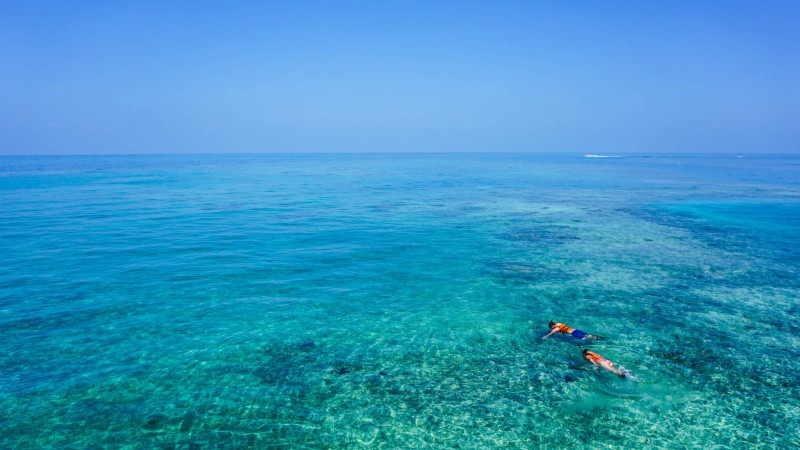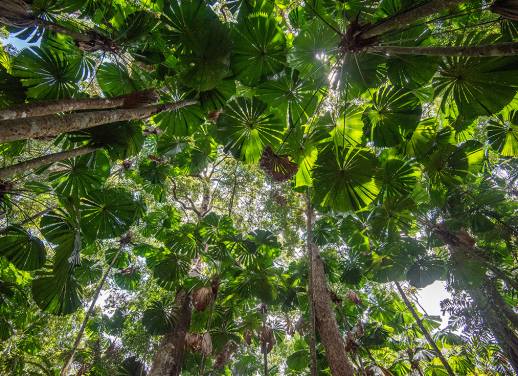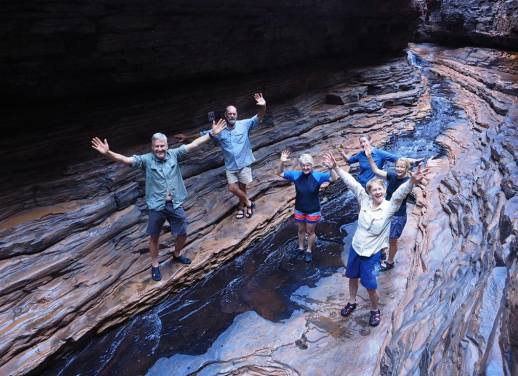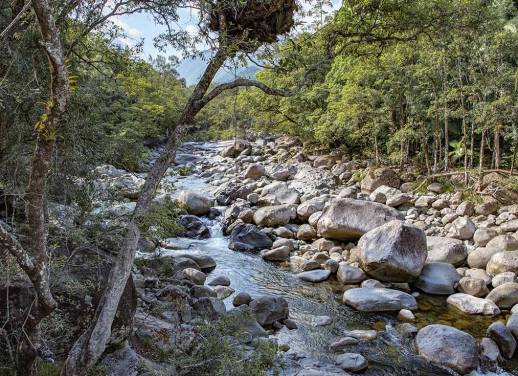Time spent swimming among the world’s largest fish or exploring one of the world’s seven natural wonders? It’s a tough choice, but the Intrepid team is here to take you one step closer to your next Australian adventure.
Australia is blessed with two extraordinary coral reefs. On the east coast, the Great Barrier Reef is the planet’s largest coral system. Meanwhile, Ningaloo Reef on the west coast might not be as big or famous, but it still holds the title of the world’s largest fringing reef – meaning you can swim out to it right from the shore. Oh, and did we mention its abundant whale-shark population (some 300 to 500, to be exact), who gather annually along the coast from March to July?
Both reefs are incredible in their own right, but a few factors may sway your decision.
Marine life
The Great Barrier Reef spans an astonishing 2300 kilometres. For scale, that’s roughly the size of Malaysia. It’s made up of more than 3000 individual reefs, home to over 600 species of coral, 1500 kinds of tropical fish, 130 types of sharks and rays, and 3000 species of molluscs. On a snorkelling trip, you’ll likely float past clownfish, parrotfish, angelfish, butterflyfish and giant clams.
Bigger creatures live here too – including dolphins, whales, dugongs and turtles. From May to August, humpbacks and dwarf minke migrate through the reef for the annual trip from Antarctica to give birth. If you’re lucky, you may catch a glimpse of a calf swimming with its mother.
Dolphins are year-round residents – including bottlenose, Indo-Pacific humpbacks, spinners and the rare Australian snubfin. The bottlenose dolphins here are known to be quite curious and sometimes surf the waves from passing boats.
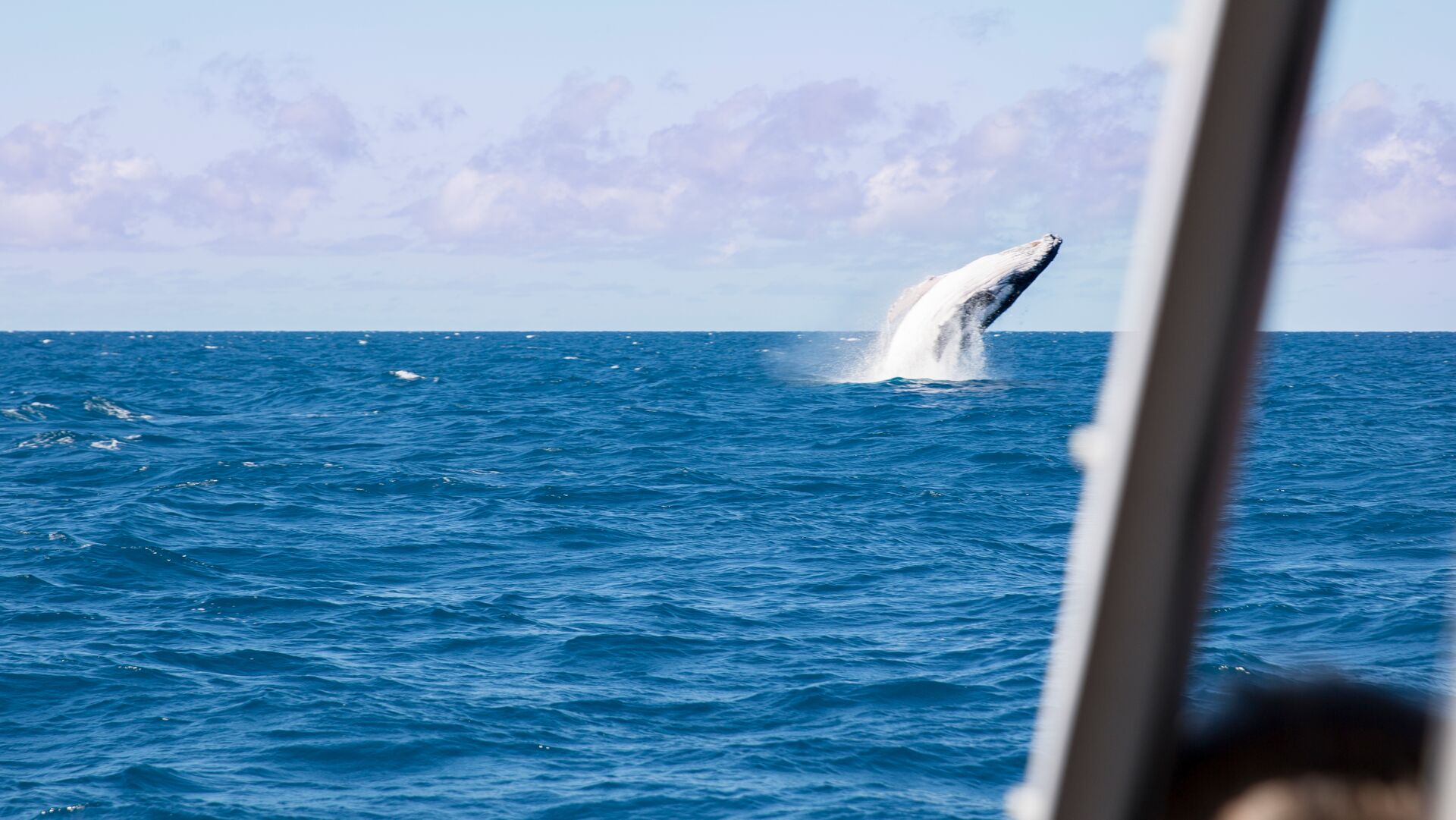
Ningaloo Reef, while smaller, is the world’s largest fringing reef – and one of the healthiest too. It has about 200 species of hard coral, ranging from spiky, skeletal-looking formations in the shallows to soft, spongy and jelly-like coral. It’s also home to 500 species of marine life – many of which can be found along the Great Barrier Reef. But as Ningaloo is smaller, encounters can be more frequent. Manta rays sweep through the waters year-round (though they’re most active from May to September), and from November to March, female turtles scuttle ashore to nest.
But Ningaloo’s headliner is the whale shark. These gentle giants grow up to 10 metres long and swimming alongside one is something else. Your best chance to spot them is between mid-March and July when they follow blooms of plankton. From June to November, migrating humpback whales join the fun at one of the largest gatherings of humpbacks on earth.
Read more: 11 things to do on K’gari
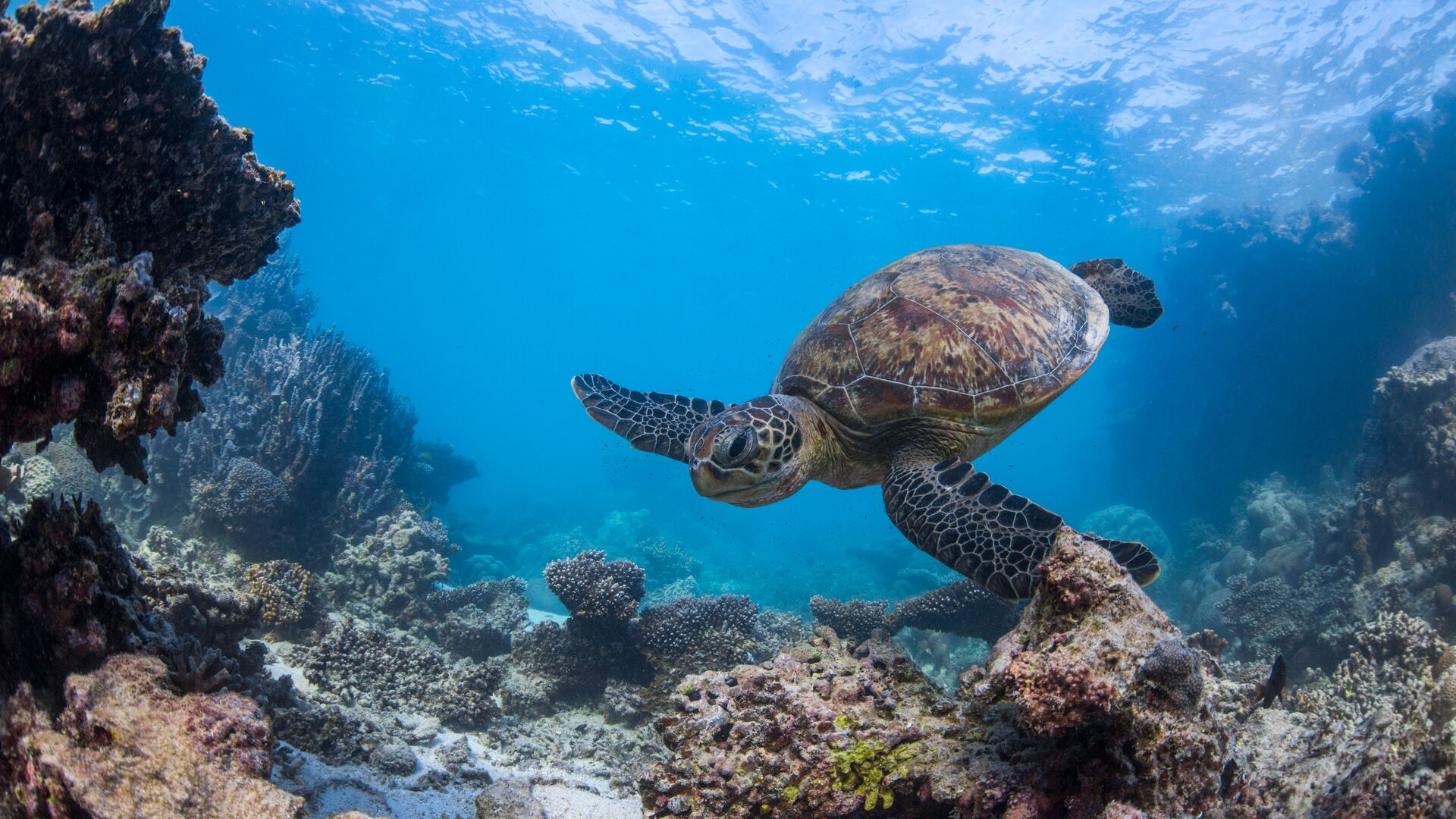
Weather
Ningaloo Reef has a hot, arid climate. With around 320 days of sunshine and only 250 mm of rain a year (mostly in February and March), the weather is reliably warm and dry. Even in the coolest months, daytime highs linger at 24°C and the sea temperature remains at a pleasant 22°C. Summer (November to February) is hotter, with temps often topping 35°C.
The Great Barrier Reef has a tropical climate. Summers (December to March) are hot, humid and rainy, with average water temperatures of 30°C – though daily downpours can impact water visibility. Winters (June to August) are warm, dry and sunny, with an average water temperature of 23°C – this tends to be the most popular time thanks to good conditions for snorkelling and diving.
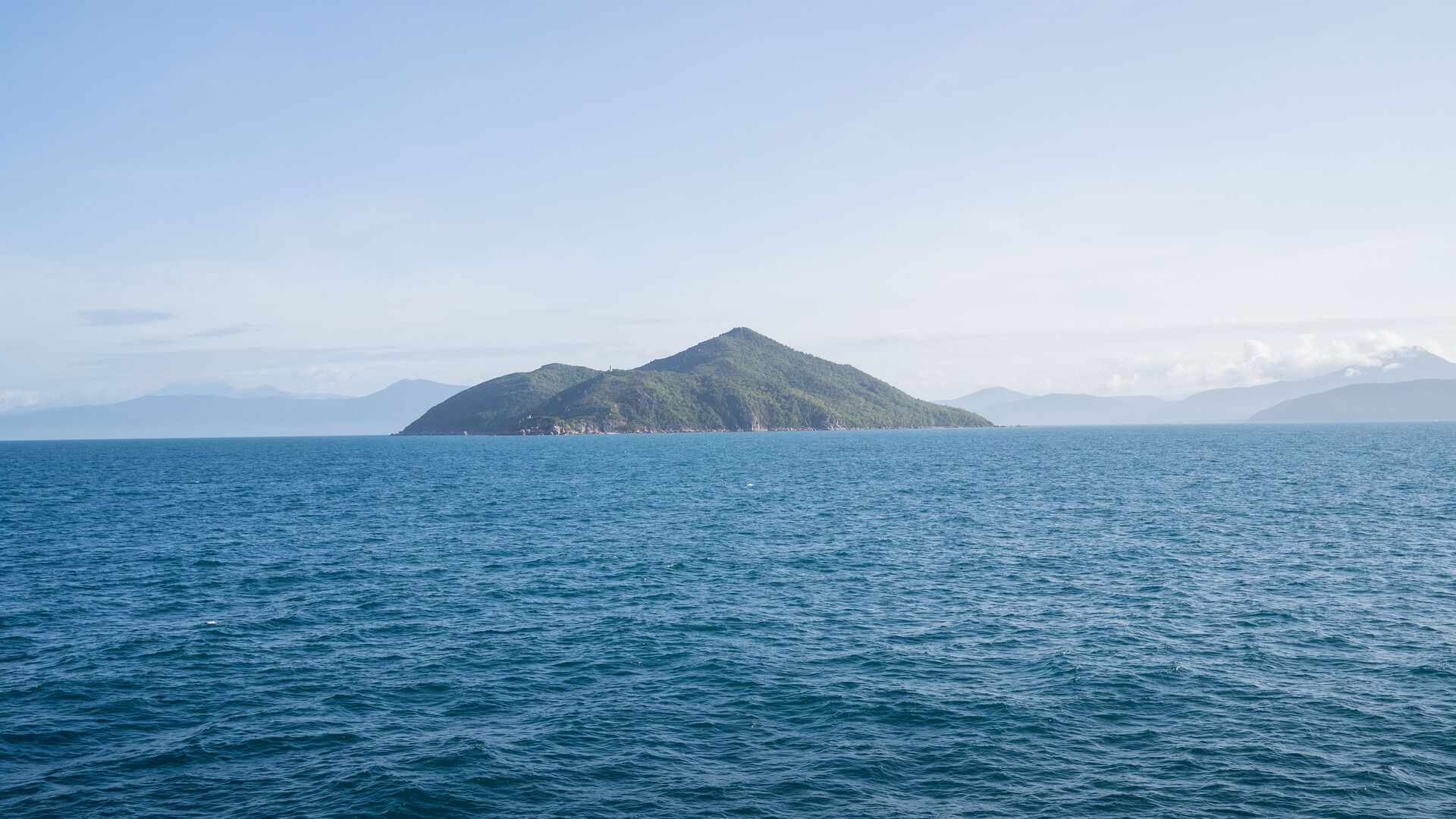
Activities (beyond snorkelling and diving)
With untouched beaches flanked by a red-sand desert, the Ningaloo Coast feels wild. Once you’ve had your vitamin-sea fix, chill out on Exmouth’s beaches or explore the gorges, caves and cliffs in Cape Range National Park. It’s quieter and more off-grid than the East Coast, with the sense of isolation part of the appeal.
The Great Barrier Reef is busier, but it offers more variety. Base yourself in Cairns to add hikes in the Daintree Rainforest and waterfalls in Cape Tribulation, or head to Airlie Beach for nightlife, great restaurants and sailing trips to the famous Whitsunday Islands – smack dab in the Great Barrier Reef Marine Park and home to bucket-list beaches like Whitehaven Beach.
Read more: 10 spots to visit on an East Coast Australia road trip
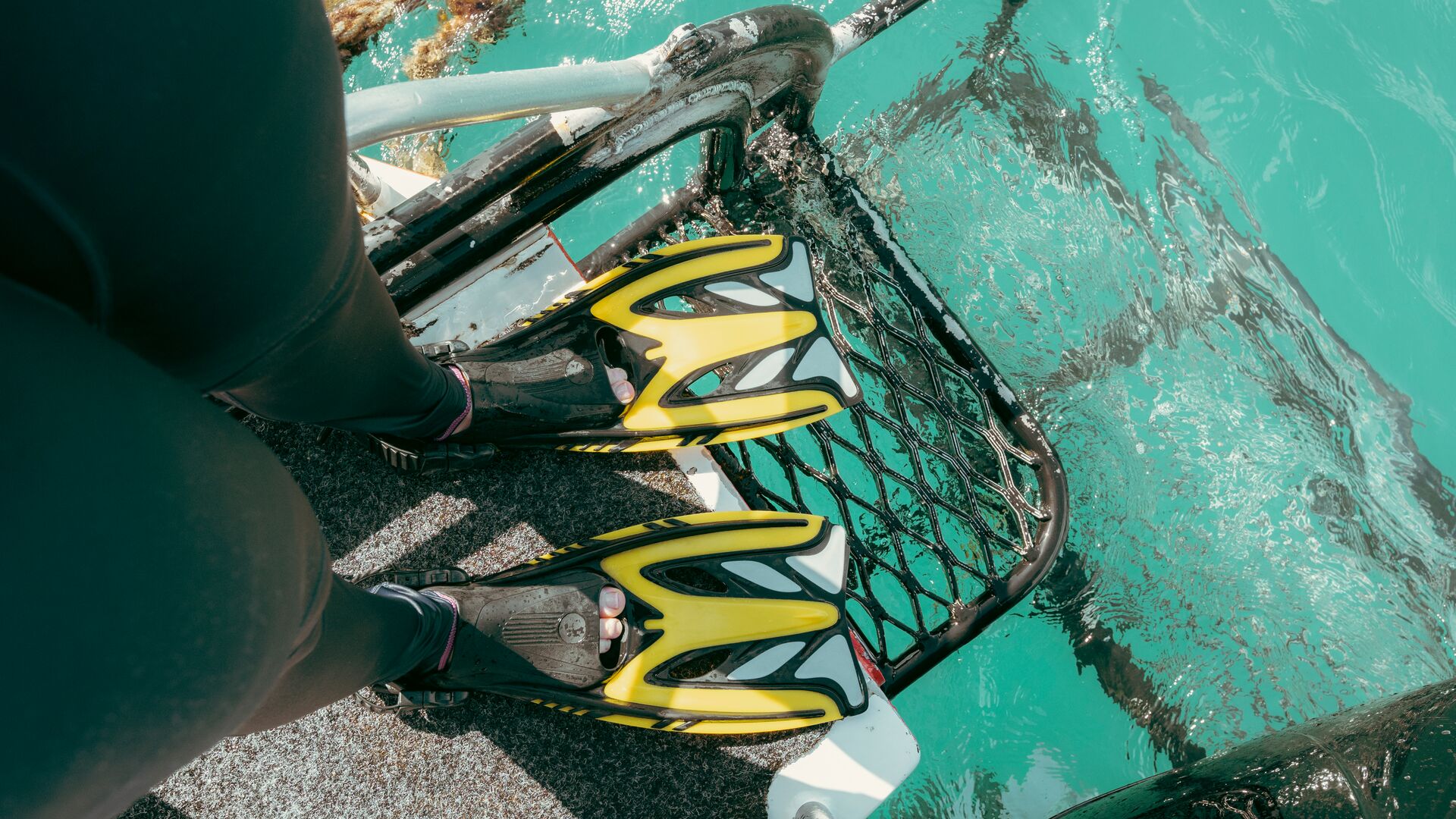
Accessibility
The Great Barrier Reef has multiple entry points along Far North Queensland. The easiest way to get there is to fly into Cairns, Hamilton Island Airport (aka the Great Barrier Reef Airport) or Whitsunday Coast Airport in Proserpine, then join a liveaboat tour or day trip out to the reef.
Getting to Ningaloo Reef is more of an adventure. Coral Bay is the closest town – and when we say close, we mean it… you can literally snorkel out to the reef from the beach. The town has basic facilities (a few shops and resorts), but for more options, you can base yourself in Exmouth (a 1.5-hour drive north).
The closest airport to Coral Bay and Exmouth is Learmonth, 36 kilometres south of Exmouth. If you’re flying domestically in Australia, you’ll probably need to connect via Perth.
Take to the waters of the Great Barrier Reef or Ningaloo Reef with expert local guidance on a small-group adventure in Australia.

